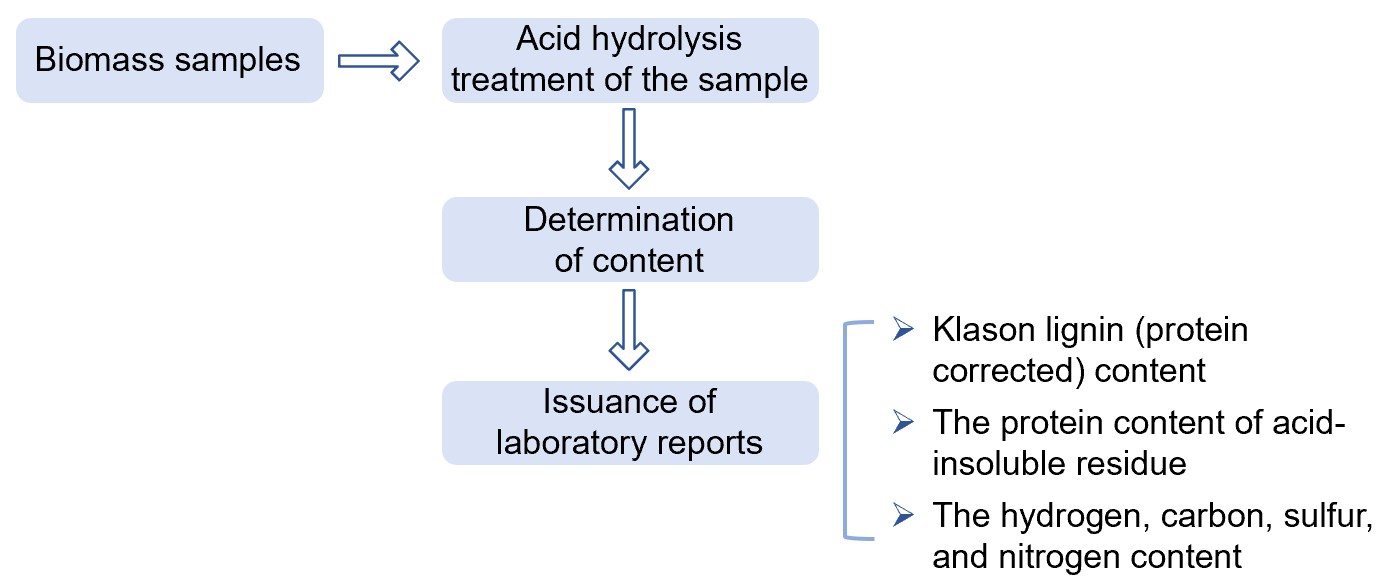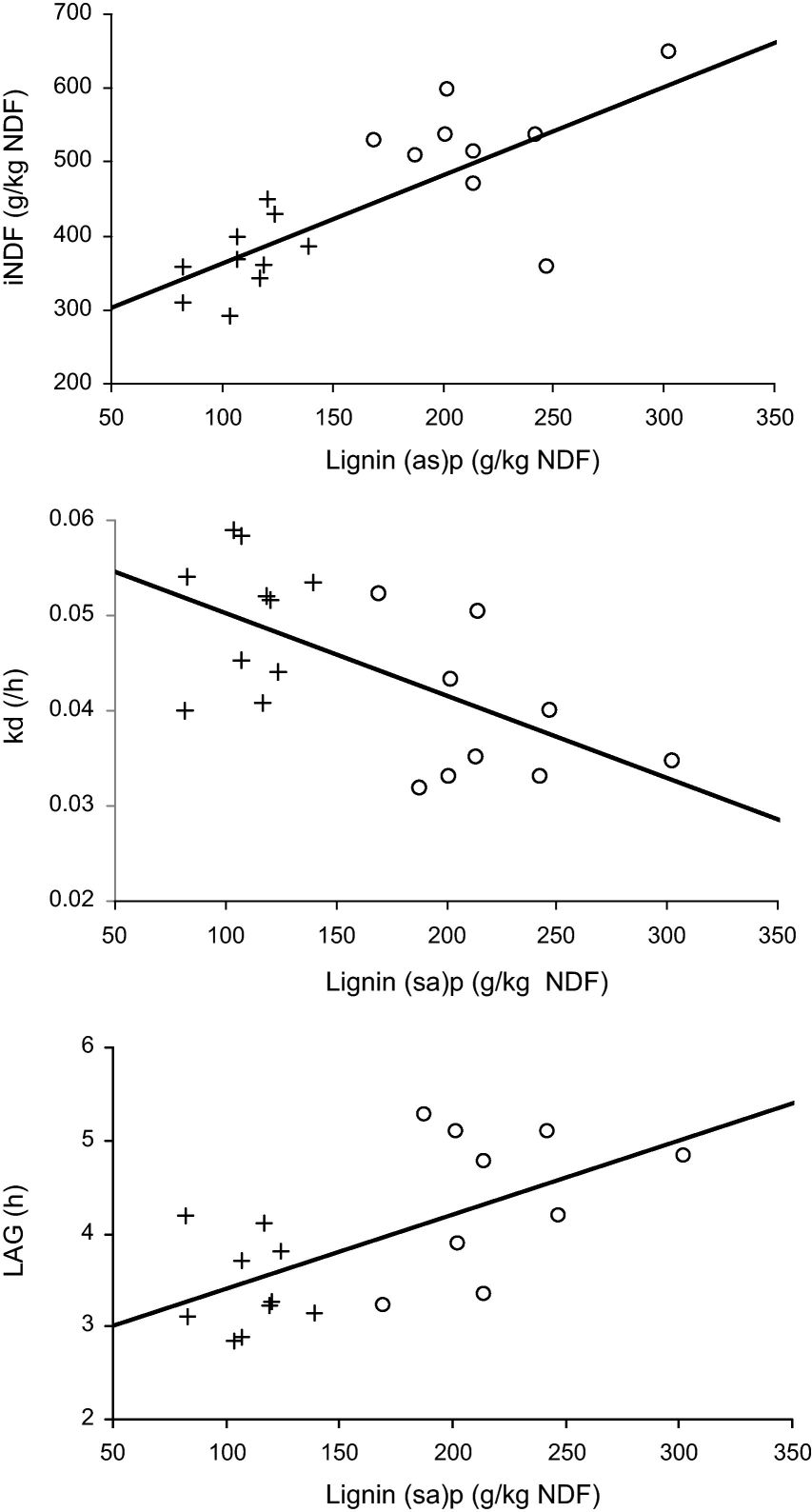Protein Calibration Service
Services Published Data FAQs Customer Review
Trust Creative Biolabs for Protein-Corrected Klason Lignin Analysis Solutions
Lignin is a complex class of organic polymers found in various biomasses such as lignocellulose. Corrected lignin content analysis helps to better evaluate the potential of various Lignocellulosic and other Biomass feedstocks for bioenergy production and other industrial applications. Creative Biolabs provides a one-stop protein-corrected Klason lignin analysis service to facilitate lignocellulosic composition analysis and quality assessment for our clients.
We analyze protein-corrected Klason lignin in various lignocellulosic and other biomasses. As with ash analysis, starch content analysis, uronic acid analysis, etc., we have optimized and validated our protein-corrected Klason lignin analysis method to ensure the accuracy and precision of our results.
-
Steps for protein-corrected Klason lignin analysis
The content of Klason lignin is calculated by the difference between the mass of the acid-insoluble residue and the mass of the treated residue. Impurities such as proteins and nitrogen compounds remain in the acid-insoluble residue, which affects the detection of lignin content. Therefore, we also perform a test for the content of protein in the acid-insoluble residue and correct the lignin content according to protein contamination. In addition to this, during the analysis of Klason lignin, we also measure the content of nitrogen, hydrogen, carbon, and sulfur in the acid-insoluble residue using an elemental analyzer.
-
Acid hydrolysis treatment of the sample
Before testing the lignin content, the sample first needs to be treated with acid hydrolysis. The treatment process may vary for different sample types.
-
Determination of content
The acid-insoluble residue is obtained by drying. We detect and calculate the content of nitrogen, carbon, hydrogen, sulfur, protein, and lignin contained in the acid-insoluble residue.
-
Delivered experimental results
-
Klason lignin (protein corrected) content
-
The protein content of acid-insoluble residue
-
The hydrogen, carbon, sulfur, and nitrogen content of acid-insoluble residue
 Fig.1 Procedure for analysis of protein-corrected Klason lignin.
Fig.1 Procedure for analysis of protein-corrected Klason lignin.
Features of Protein-Corrected Klason Lignin Analysis Service
-
Professional analysts: Our analysts are experienced and develop custom analysis plans according to client needs and sample types.
-
Guaranteed experimental cycle: The analytical methods we use have been optimized and are very efficient. After clarifying the client's needs, we carry out the analysis and deliver the results as quickly as possible.
-
Accurate results: Samples are analyzed in duplicate to ensure accurate and precise results.
Creative Biolabs is a leader in lignocellulose analysis. We develop individualized protocols according to the needs of our clients and perform careful and precise sample handling and protein-corrected Klason lignin analysis. Please feel free to contact us for more information and a detailed quote on protein-corrected Klason lignin analysis. We are always at your disposal for any assistance.
Published data
This paper studies the metabolic characteristics of sugarcane internodes at different growth rates. The authors collected sugarcane samples at different growth stages, pre-treated the samples by crushing and drying, and performed a series of analysis tests. First, they acid-hydrolyzed the samples and determined the content of Klason lignin by calculating the difference between the acid-insoluble residue and its ash content. Next, they used a solvent extractor to extract various biomass components in the samples and determined the soluble sugars in the extract. Subsequently, they extracted metabolites and proteins from the samples using methods recommended in the literature and analyzed the metabolome and proteome changes in the samples using gas chromatography and liquid chromatography-mass spectrometry. The results showed that the duration of elongation of sugarcane internodes was not directly related to its growth rate, but was affected by heat. However, the accumulation of lignin and sucrose showed strong sensitivity to growth rate.
 Fig.2 Biomass accumulation rate of sugarcane internodes. (A: total biomass, B: cellulose, C: hemicellulose, D lignin, E: sucrose).1
Fig.2 Biomass accumulation rate of sugarcane internodes. (A: total biomass, B: cellulose, C: hemicellulose, D lignin, E: sucrose).1
FAQ
Q1: Why is a protein correction required for the detection of Klason lignin?
A1: The content of Klason lignin is calculated from the difference between the acid-insoluble residue and the residual mass after subsequent treatment. Acid-insoluble residues contain proteins that can interfere with the lignin content to a certain extent. Therefore, a protein correction for lignin content is required to obtain a more accurate lignin content during the testing process to accurately assess the value of lignocellulose.
Q2: Is it possible to pre-treat the samples?
A2: Our lab can pre-treat samples by grinding, etc. This may increase the experimental period to some extent. After the client explains the type of sample and specific requirements, we will develop an exclusive analysis plan according to the actual situation to maximize the satisfaction of the client's requirements.
Customer Review
Professional and Reliable Service
"We were very pleased to work with Creative Biolabs. Their protein-corrected Klason lignin analysis service was excellent. They were very patient in explaining the process and results to us. The lab report provided was also very comprehensive and detailed, very professional and reliable."
Careful and Precise Handling and Analysis
"The protein-corrected Klason lignin analysis service at Creative Biolabs was very good considering the high quality, reliable lab results, and professional consultation. Their analysts inquired about our sample type and requirements in the first place and developed a very detailed and fitting experimental protocol. It was clear that they were experts in this field and their careful and precise handling of each sample analyzed was great."
Reference
-
Botha, Frederik C., and Annelie Marquardt. "Metabolic Control of Sugarcane Internode Elongation and Sucrose Accumulation." Agronomy 14.7 (2024): 1487. Distributed under Open Access license CC BY 4.0, without modification.
For Research Use Only.
Related Services

 Fig.1 Procedure for analysis of protein-corrected Klason lignin.
Fig.1 Procedure for analysis of protein-corrected Klason lignin.
 Fig.2 Biomass accumulation rate of sugarcane internodes. (A: total biomass, B: cellulose, C: hemicellulose, D lignin, E: sucrose).1
Fig.2 Biomass accumulation rate of sugarcane internodes. (A: total biomass, B: cellulose, C: hemicellulose, D lignin, E: sucrose).1

